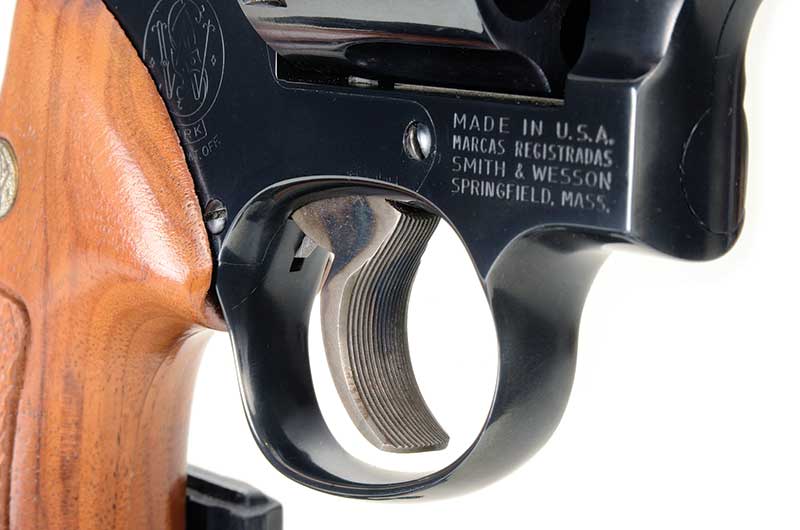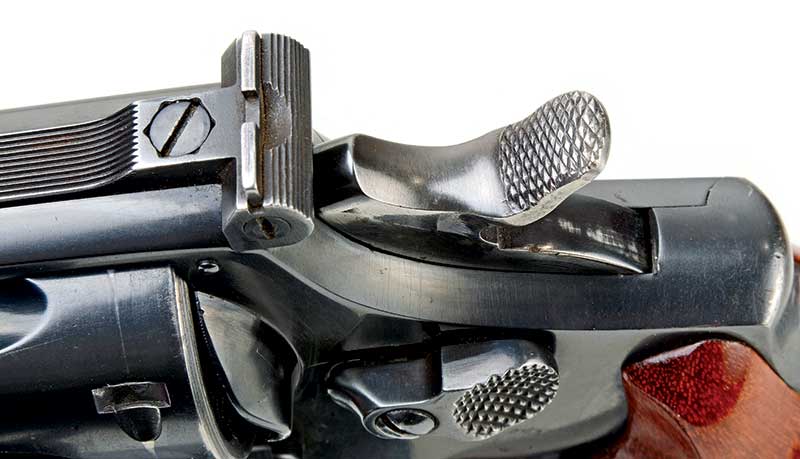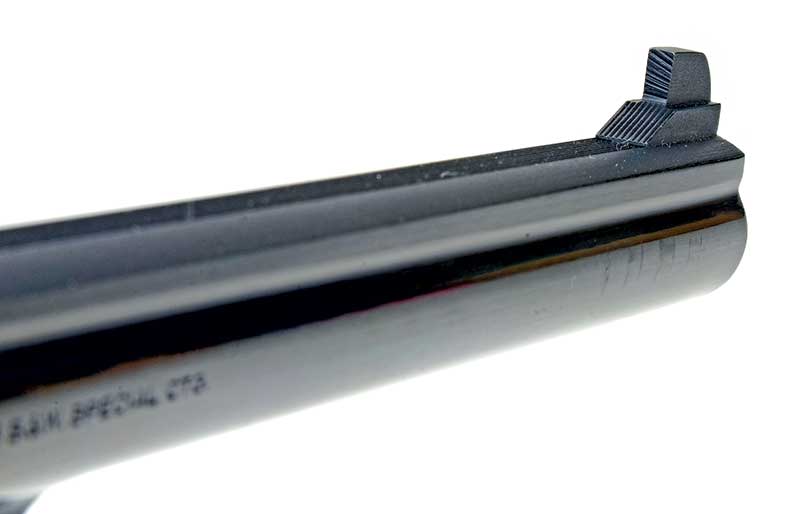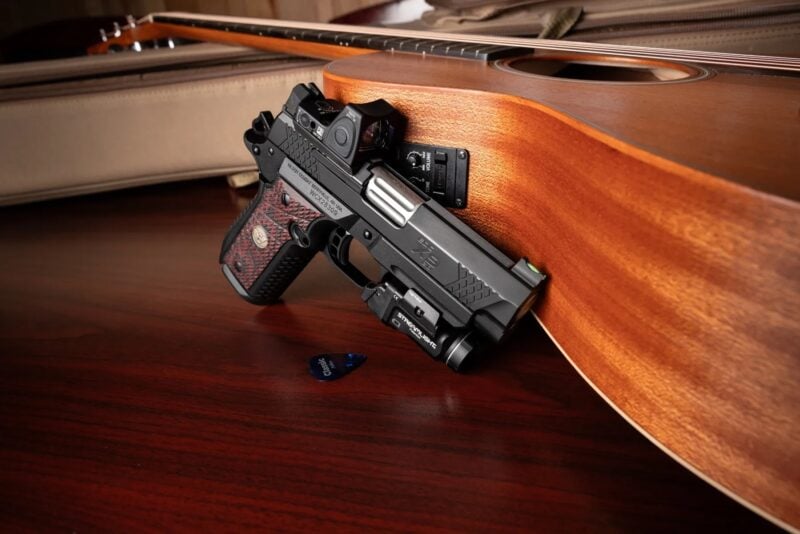S&W’s Master Pieces
Classic Style Meets Top-Notch Accuracy
In July, 1966, shortly into my 17th year, I acquired the first handgun I actually paid for myself. It was a Smith & Wesson K-38 Masterpiece, named by the company because they felt, like their .22, .32 and .38 target revolvers, it deserved the superlative moniker.
I agree. By some manner I do not even remember, there was $65 in my pocket when I drove from my home town of Williamson, W.V., to a small village named Red Jacket where a gentleman named Robert Hendricks was said to have a S&W K38 for sale. With my folks okay on things, Mr. Hendricks sold me the K38 for $50 plus another two dollars for a box of .38 Special 148-gr. wadcutters. Those 50 rounds were spent the same evening at the local gun club. I don’t remember where the other $13 of my treasure went but likely it was for more .38 wadcutter factory loads, the price of which forced me into becoming a handloader and bullet caster a few months later.
By 1970 Mr. Hendricks and I became friends and together fired many hundreds of .38’s on weekends, until I graduated from college and left permanently for Montana. I still remember his birthdate: March 1, 1900.
Smith & Wesson inaugurated the K-Masterpiece series just after World War II. First introduced was the K-22 in December 1946, with the K-32 and K-38 following by the summer of 1947. They were all of a type, with 6″ barrels, patridge style front sights and fully adjustable rear sights. Grips were checkered walnut which the company termed Magna style. They were double actions, although some K38’s were built with single action only mechanisms.
Model Numbers
In the late 1950’s Smith & Wesson adopted model numbers for all their handguns and these three became the Model 17 (K-22), Model 16 (K-32) and Model 14 (K-38). By 1949, the year of my birth, Smith & Wesson had received significant requests from law enforcement agencies for variations of the K-22 and K-38 with 4″ barrels. The .22’s would be for training and the .38’s for police sidearms. These were given the name Combat Masterpiece. Besides barrel lengths the only significant differences between Masterpieces and Combat Masterpieces was the fact the latter had ramped front sights and a thinner rib on top of the barrel.
According to Roy Jinks’ book History of Smith & Wesson, some small quantity of .32 Combat Masterpieces were made along with some with 31/2″ and 5″ barrel lengths, but not as standard catalog items. What did become a standard catalog item in 1960 was a .38 Combat Masterpiece with 2″ barrel. When Smith & Wesson model numbers were assigned, .22 Combat Masterpieces became Model 18’s and .38’s became the Model 15’s.
This is where things begin to get confusing. In 1959 and 1960 the Model 14 (K-38) and Model 17 (K-22) respectively were also cataloged with 83/8″ barrels. So we have K-38’s with 6″ and 83/8″ barrel lengths named Model 14’s. Then essentially the same revolver, except for rib and front sight, with 2″ and 4” barrel lengths were Model 15’s. On top of that there are K-Frame .22’s with 6″ and 83/8″ barrels named Model 17’s but a 4″ version — again identical except for rib and sight — is Model 18.
If you think that’s confusing to read, consider me back as a young adult, an avid handgunner finally making a living for myself and trying to accumulate all these different models. Now factor in this following information. Due to slow sales Smith & Wesson discontinued the Model 16/K-32 in 1974 after a mere 3,630 had been made.
In 1982 and 1985 respectively they dropped the Model 14/K-38 and Model 18 .22. The Model 17/K22 lasted till 1989. Then to add to the mix in 1986 Smith & Wesson added 6″- and 83/8″-barreled versions of the Model 15. How did they differ from 6″ and 83/8″ Model 14’s? By the front sight I suppose — saying that because I must admit to never recognizing a target sighted K-Frame .38 with the two longer barrel lengths as a Model 15. To me they were always Model 14’s.
Confused Yet?
So let’s boil this down to essentials. Between 1946 and 1989, Smith & Wesson produced K-Frame, target-sighted revolvers chambered for .22 LR, .32 S&W Long and .38 S&W Special. Collectively they were offered with 2″, 4″, 6″ and 83/8″ barrel lengths as standard, albeit some 31/2″ and 5″ ones may show up.
Younger readers may be asking about the “reintroductions,” i.e., those K-22’s, K-32’s and K-38’s appearing circa 1990 with full underlug heavy barrels. It’s simple. Those are not my K-22’s, K-32’s and K-38’s. Mine were the ones around when I was growing up in the ’60’s. I never needed that much steel hanging on a handgun of such moderate power.
Did I ever accumulate all of the K-Masterpieces? That’s a qualified yes. I never had them all together at once, nor have I owned all the barrel lengths simultaneously. But yes, I have owned Models 14, 15, 16, 17 and 18. Right now in my vault are a Model 15 with 2″ barrel, a Model 14 with 83/8″ barrel and a Model 18 with the only barrel length offered for it — 4″.
After I moved to Montana my penchant for K-Masterpieces dissipated a bit. Riding around the mountains on horseback led me to appreciate magnums more, so .357, .41 and .44 Magnums were my carrying handguns. However, after a bit, I and a couple friends got into evening bullseye shooting matches. One had an S&W Model 27 .357 Magnum with 61/2″ barrel and the other had a K-38 with 6″ barrel. At that time my shooting focused on an S&W Model 19 with 6″ barrel. None of us could dominate, so I figured to get an advantage and ordered a K-38 with 83/8″ barrel. That caused the other two guys to quit, ending our informal competitions. I don’t even remember what I traded that hardly used K-38 fo
Still At It
A few years later I was happily married and minus any sort of K-Masterpiece. When my wife needed to go shopping in Bozeman she would drop me off at the Powder Horn — a very well stocked gun store on Main Street. One day in the early 1980’s I was glancing in their used handgun case when I noticed a K-model with the common 6″ barrel. Then I did a double take: that revolver’s muzzle had too small a hole to be a .38 and too big to be a .22. Could it actually be one of those rare K-32’s? It was and I got it for a ridiculously low price. Some years later an editor used his position as leverage on my good nature to talk me out of it. I hope he still enjoys it.
Along the way a friend gave me a fine Model 18 which served as my only K-Masterpiece for several years. Then three weeks ago at a gun show I spied a Model 15 with 2″ barrel, which reminded me of a demonstration I saw an FBI firearms instructor do long ago. I’ll tell you about it someday, but for right now I’ll say that specific memory made me buy the Combat Masterpiece snubbie. In turn that fueled my nostalgia and just two days ago I picked up a like-new K-38 with 83/8″ barrel. I intend to gain the experience with it I neglected with the one back in the 1970’s.
Are they really “Masterpieces?” Yes, if you can live with the power of a .22 or .38 and an ammunition capacity of six rounds, they are probably as accurate as any off-the-shelf revolvers ever made. I intend to prove that statement with test firing done in the near future.















